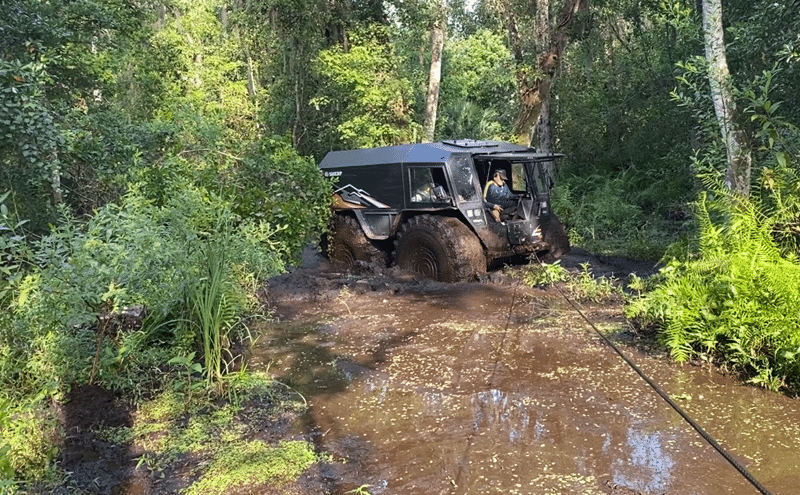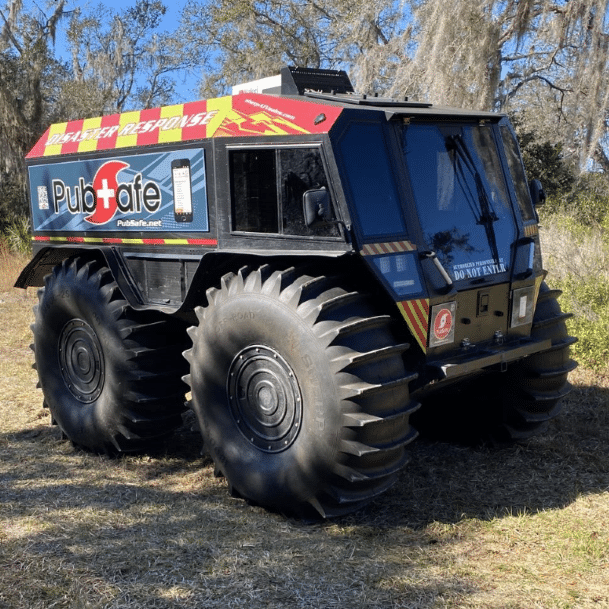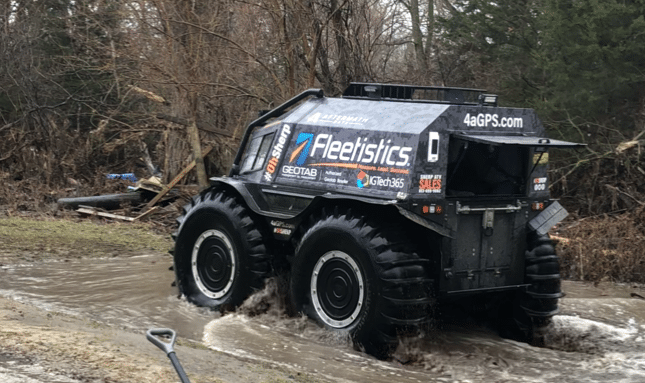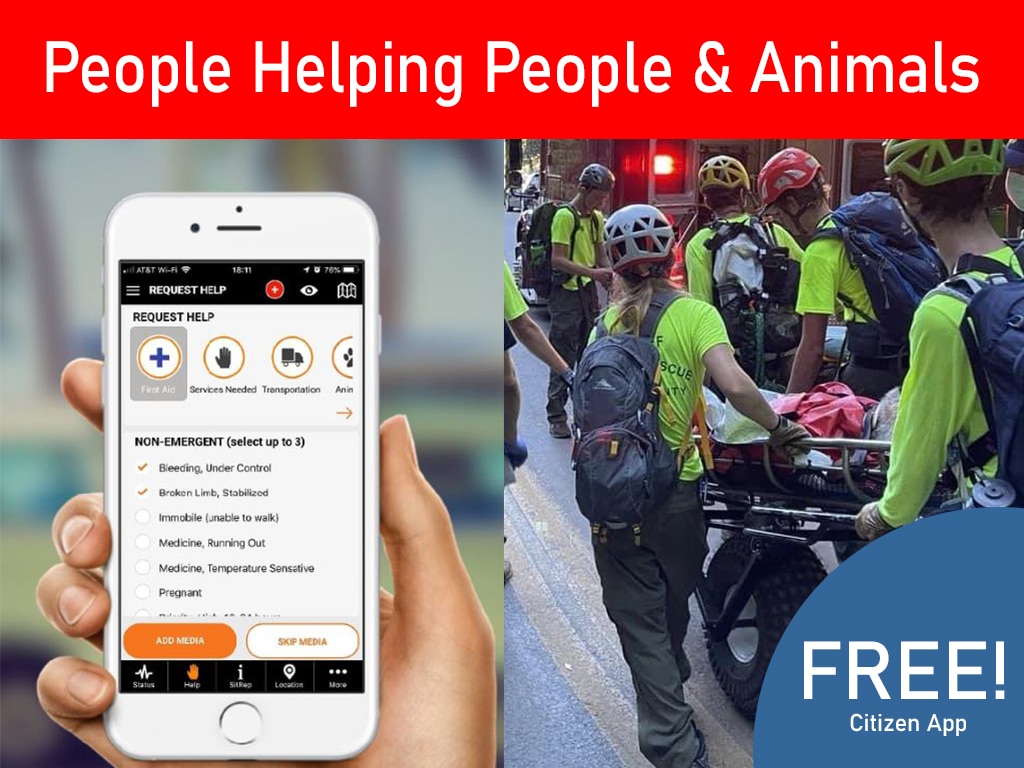hATV Pros and Cons for Search and Rescue
The Sherp ATV is a known search and rescue vehicle. It has been around for almost a decade and was originally designed for operation on the tundra of Siberia. Siberia has a lot of marsh and bog in the summer when the ice and snow melt making it impossible for regular off-road vehicles or even track vehicles. In the colder months, vehicles must be able to travel on thin ice, water or deep snow.
If your organization is searching for a search and rescue vehicle, understanding the Sherp ATV pros and cons will ensure a good decision is made. There are many vehicles, ATVs and boats used in SAR, and each do well in specific areas. Finding the right balance of capabilities to meet your mission requirements will avoid making the wrong investment.
These pros and cons are based on having owned several of each model of Sherp ATV over the past 7 years and having deployed with the Sherp to
Pro of the Sherp ATV for Search and Rescue
There are many pros to the Sherp as a rescue platform. It brings a lot of versatility and reliability enabling it to work year round under a wide variety of conditions. It does many things well, and a few things very well. Let’s lay out the pros for search and rescue.
Amphibious
The Sherp is an amphibious vehicle. The large tires provide flotation on the water. The large treads provide the propulsion. Due to the large tire size, it is able to break through ice and climb back onto ice. In warm environments, the Sherp can often climb over down trees, palmettos, and deep mud. Generally, as long as the Sherp can get traction, it keeps moving forward. Thick tacky clay can get the Sherp stuck but a little tug from a 5,000 lbs winch is all that it takes to get a little traction.
Controlled Environment
The Sherp offers heating and air conditioning as standard. Extreme temperature conditions can be dangerous whether it is cold or hot. The Sherp heater keeps the engine warm for subzero operation. In the summer, the AC unit keeps operators and passengers cool. In a search and rescue, the controlled climate keeps the patient stable during transport.
Fuel Efficiency
The Sherp has a 25 gallon fuel tank with the ability to store more fuel in the wheel canisters. The large amount of fuel enables the Sherp to operate for days using just 7-8 gals/hr.
Passenger Capacity
The Sherp is large enough to carry up to 8 passengers. In a rescue situation, two people can be in the front and two in the rear with a litter for a victim. If transporting just people, seating can be provided for up to 8 people. If staying on land, more can be carried but it will exceed the max payload.
Reliability
Reliability is critical during search and rescue operations. There are no service centers open and having to fix equipment when people need rescue is not ideal. The Sherp uses a 1.8L Doosan diesel engine, producing 55 HP. This engine is used in a wide variety of small equipment around the globe. It is known to be a very reliable platform which any diesel mechanic should recognize.
Stability and Safety
When traveling over uneven terrain or in water where you cannot see the bottom, stability is very important for safety. The very low center of gravity makes it very difficult to flip under reasonable operating conditions. The engine sits at the same level as the drive train in the belly of the vehicle.
All Terrain
The large tires, flotation, low gear providing lots of torque, 26″ ground clearance and all wheel drive, make the Sherp capable going almost anywhere reasonable. It’s ability to go from water to ice, sand to mud, rock to road, make it extremely versatile.

Cons of the Sherp ATV for Search and Rescue
Speed
Getting to and from a disaster zone during rescue operations is highly reliant on speed. The faster the vehicle, the more rescues can be made. Airboats are good example of a vehicle with high speed and maneuverability. Airboats can cross some land provided it is not rocky or asphalt. Airboats also run the risk of being torn open by a fire hydrant just beneath the surface of the water.
Towing & Payload Capacity
The payload capacity is 2,640 and the towing capacity is 5,181. These are respectable numbers and will decrease on the water for safety. These capacities might be considered light by some standards. If moving bottle water, fuel tanks, or other heavy items, the capacity might run short.
Size
The size of the Sherp can make it a bit of a challenge in some scenarios. An equipment trailer is the most common method of transport. The combination of trailer weight and Sherp weight will exceed mid-size pickup trucks, make it hard to pull in soft road conditions, and reduce maneuverability in tight spaces.
Maintenance
Although the Doosan engine is very reliable, if it were to breakdown, there may not be a diesel mechanic shop nearby. Sherp specific parts may also take time to get. This is definitely a situation where preventive maintenance is very important.
Cost
What does a Sherp ATV cost? Good question. Prices range from $100,000 to $175,000 for used verse new. There are plenty of used units available with low hours. In fact, the PubSafe Sherp is for sale for $115,000 with 80 hours. Contact us if you are interested in purchasing the PubSafe Sherp.







